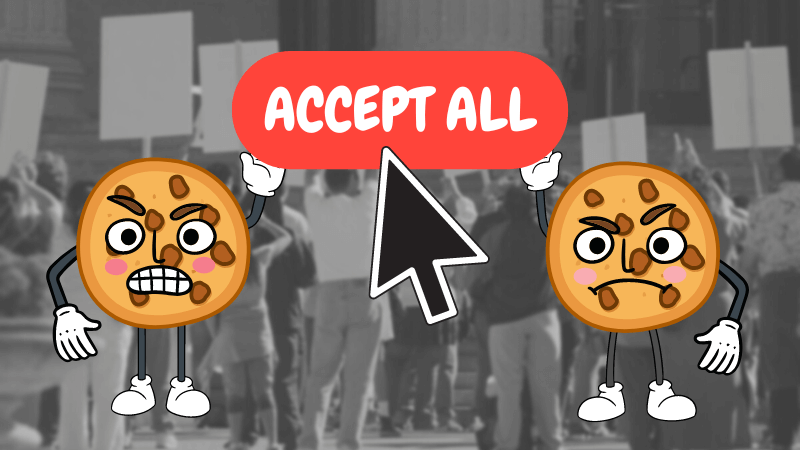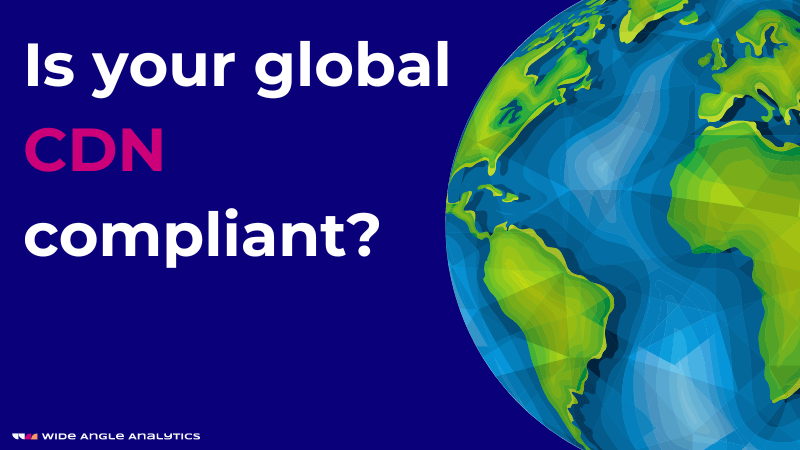Cookieless website tracking is possible and very reliable. When implemented correctly, it can be used without Cookie Banner, which makes it very reliable.
What is Cookieless Analytics? If you have used the Internet in the last 10 years, you must have stomped over a few of those pesky Cookie Banner. The tools like Wide Angle Analytics support business
Why Cookie Banners?
Believe it or not, these Cookie Banner are a knee-jerk reaction to major ad networks’ predatory practices, such as Google’s AdSense and Amazon Ads. These and other companies use a website on which their ads are placed to add cookies to your browser. These cookies then are accessed as you travel through the Internet through other websites. Thus creating a trail of your activity.
No wonder cookies are demonized. Third-party cookies are pure evil. Giving large monopolies a stronghold over your digital life.
But not all cookies are created equal. Just because Oreo, chocolate-chip or chewie oatmeals are cookies, it does not make them the same.
Same with browser cookies. You can have so-called Same Site cookies, which cannot be abused that way. These are strictly confined to a single website.
Hold on, are you saying we can have our cookie and eat it?
Not so fast.
Even same-site, secure cookies can be a problem. Even if you are not visiting Google or Amazon, a smaller website can still engage in tracking by modifying the website based on your past behaviour. Even worse, it could tie your exploratory visits with registration months ahead. Suddenly activity you performed anonymously gets attached to your name, address or billing details. Not cool.
Moreover, to keep the cookie, the website needs to physically save something on your device. This might not be a big deal. But according to European law, this is access to a Terminal Device.
And access to a Terminal Device is a big can of worms. Such access leads to a consent form, a fancy name for a Cookie Banner.
You don’t want to do that unless you have a good reason.
Pff, I press “Accept All” and plough on.
You are right. Until recently, this was the behaviour of the majority. Websites were abusing the complex, sluggish forms to discourage you from making conscious choices. If you wanted access to the website, your best bet was to press “Accept All” and be done with it.
Luckily, the European regulators caught wind and finally clamped down on the racket. These days, plenty of websites will rightly offer visitors an equally visible and equally accessible “Reject All” button.
What’s left
In summary, you should not use cookies; when you use them, you need an easy way to prevent their usage. Sounds pretty tricky, ey?
Enter the world of Cookieless Tracking…
Cookieless tracking
Cookieless or cookie-free tracking is a form of tracking without using cookies. Hooray, we don’t need Cookie Banner no more!! Steady there, fella. Not so fast.
Cookie Banner is a colloquial name for identifiable tracking or one that accesses the Terminal Device. Other techniques, like browser fingerprinting, can be equally effective, in rare cases more persistent than cookies, and thus will still require Cookie Banner and consent.
If your tracker accesses the device’s time zone, screen resolution, or unique drawing canvas, you must ask for consent. You are effectively accessing the Terminal Device of the visitor.
The drawing canvas is a fascinating case. This fingerprint uses your browser to generate a small sample image behind the scenes. This image is then converted to a string of characters. Because each device is ever so slightly different, the result of such generation will differ ever so slightly between devices. This string, combined with the visitor’s browser name and the general location, will create an exceptionally accurate fingerprint.
The bottom line is that even without cookies, you can consistently track returning visitors and create long-running user sessions. However, when you do, you must ask for consent.
Cookieless Tracking Without Consent
Wait, is that even possible? Can you actually get information about your website visitors without explicit consent?
I’ve good and bad news, which one do you want first?
Let’s start with bad news.
You can’t track a lot of aspects of the visitors. Want to access screen resolution to get screen orientation? That’s a terminal device, so that might be off the table. Would you like to somehow assert the age? Forget about it. Maybe you want to use this highly effective canvas fingerprint. Stop. Don’t. Or explicitly ask for consent.
Oh, so where is the good news?
Let’s start with the basics. To collect visitor data without explicit consent, you need:
- to have a legitimate need, and
- collect data that is neither personal nor identifiable, and
- not access the Terminal Device, and
- not transfer information collected to a not adequate country or jurisdiction without additional security measures (i.e., end-to-end encryption), and
- provide an opt-out mechanism.
Rather than breaking down each bullet point, let’s focus on what matters.
In which scenario can you get traffic data without explicit consent, without the Cookie Banner?
You can collect traffic analytics if you collect these solely for your purposes, to improve the website experience and make sure you serve the right audience. You can also try to understand where these visitors came from – don’t be too accurate, say down to province/region level. And if every piece of personal data, such as IP address, is never stored in a reversible, identifying manner. And use web analytics hosted and operated in the EU/EEA country.
Sound like a lot of work, does it? That’s why we built Wide Angle Analytics. Sign-up, create your site, add one line of HTML to your website, and you are done. All the above is there, in default settings. We do all the heavy lifting.
Is that enough?
I hear you. Simple traffic analytics are, well, simple. To get more valuable insight, you might want to track users throughout a more extended session or benefit from cookies when users agree.
At some point, you would like to track goal conversations and record some specific interactions with the website.
No Cookie Banners. Resilient against AdBlockers.
Try Wide Angle Analytics!
We got you covered. Wide Angle Analytics goes beyond simple analytics. Something that was unfathomable not long ago, during Google Analytics domination. Today, we give you a tool that keeps evolving and gives you control to adhere to privacy rules for your general audience. All while enabling more in-depth analysis for registered users or those who gave you consent.
The content of this article is not legal advice.
Always consult your Data Protection Officer or data privacy lawyer.



